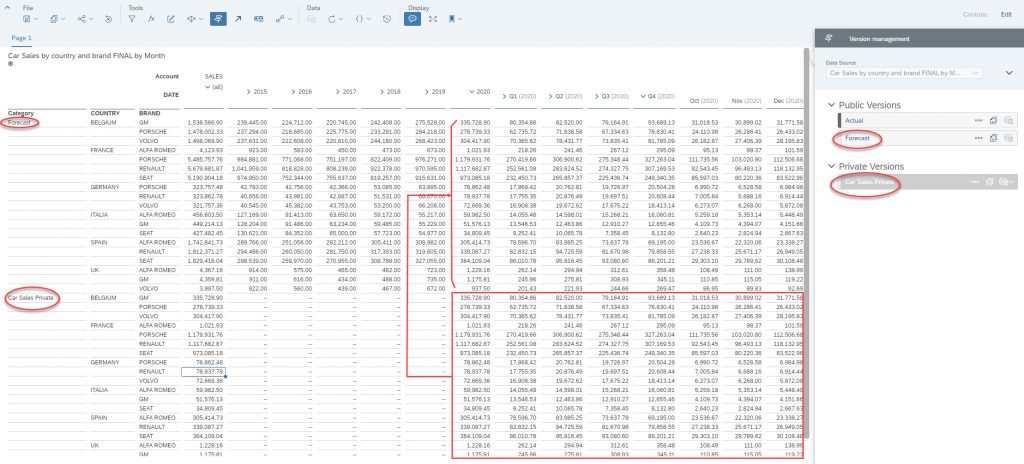The goal of this blog is to explain how to keep the private version of a planning model to which predictive forecasts were generated. Predictive forecasts are generated from historical data contained in the planning model, and are written back to a private version of this planning model. To retrieve those forecasts in a public version, the planner must publish the private version. A side effect of the publication is the deletion of the private version once it is copied to a public version. So, if planners want to revisit the predictive settings to get better forecasts, they have to restart from the beginning. There is a simple way to avoid this rework, as you can see from the figure below.

There is a new step before the publication of the private version. It involves the creation of a copy of the private version. It is this duplicated private version that will be published as a public version, and then deleted. The original private version is then still available to store new forecasts. So, the planner could go back to the first private version if needed.
Let see an example of how this works.
The use case is about forecasting car sales in European countries by car brands. The planner has historical data since 2015, and the objective is to forecast sales in 2020 by country and brand. The screenshot below shows a story on the planning model. You can see here the “Actual” version of the data, but in general, the planner won’t work directly on this version. Instead they will work on a copy called here “Forecast”.
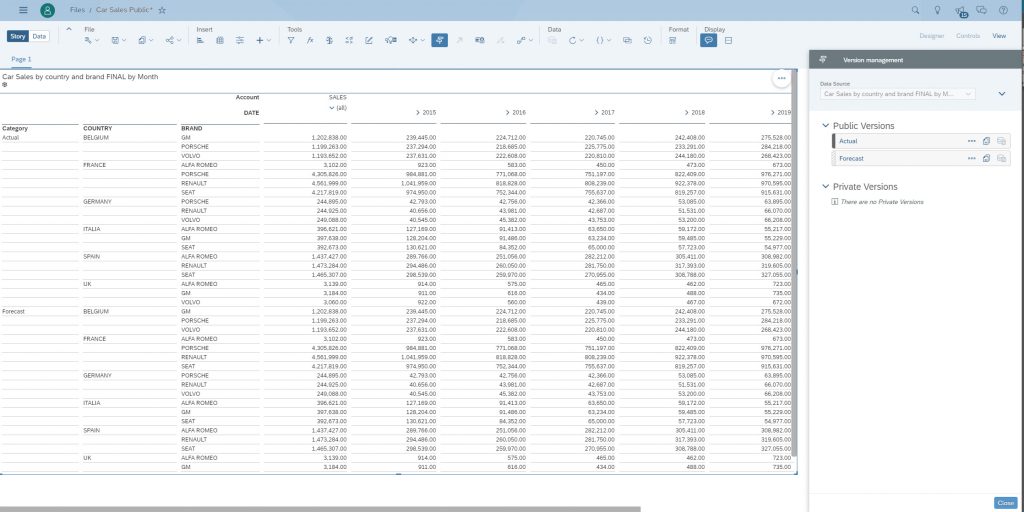
The planner creates a private version as shown below. It will be their working version in which predictive forecasts will be generated. So, there is no need to copy historical data in this version.
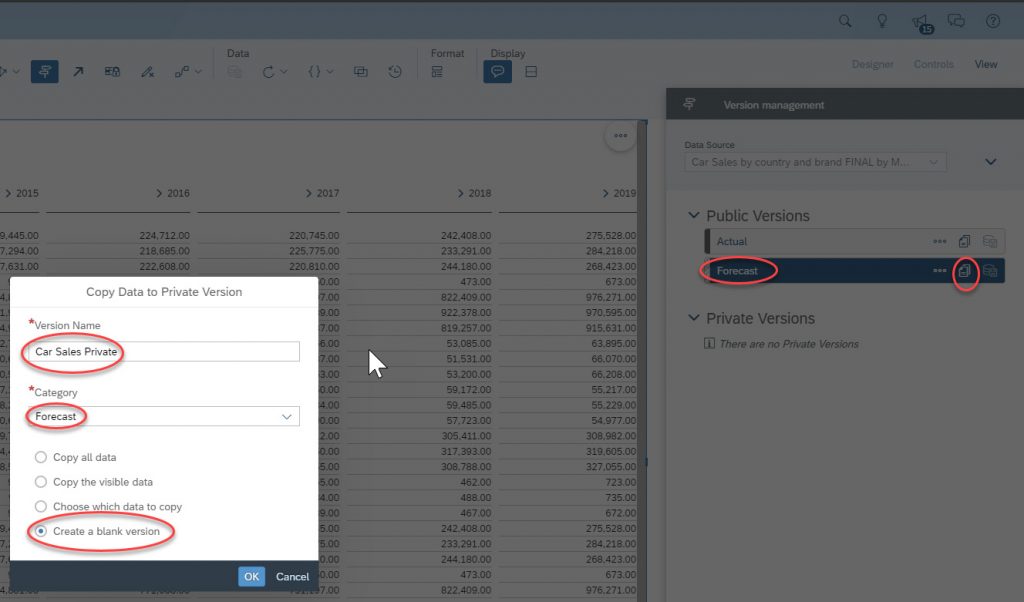
As soon as the planner clicks on the “OK” button, the private version called “Car Sales Private” is created.
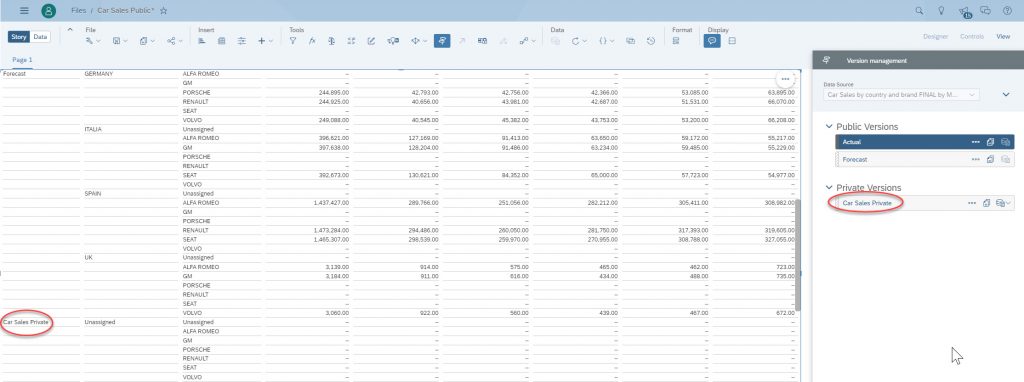
The planner saves the planning story and creates a Predictive Scenario. They choose a time series Predictive Scenario and name it “Car Sales”. They then select the planning model as data source, and the version with historical data that will be analyzed to create the forecast. This is the public version named “Forecast”.
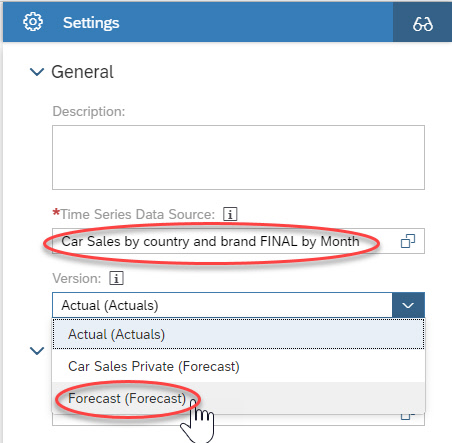
The planner then chooses the account member “SALES” as signal (value to predict), and the date dimension “DATE”. As the planner wants to predict the full year 2020, the number of forecasts is 12 months. The planner wants predictions for all valid combinations of country and brand. Thus, they select the dimensions “COUNTRY” and “BRAND” in the “Entity” field. In the end, the settings panel looks like this.
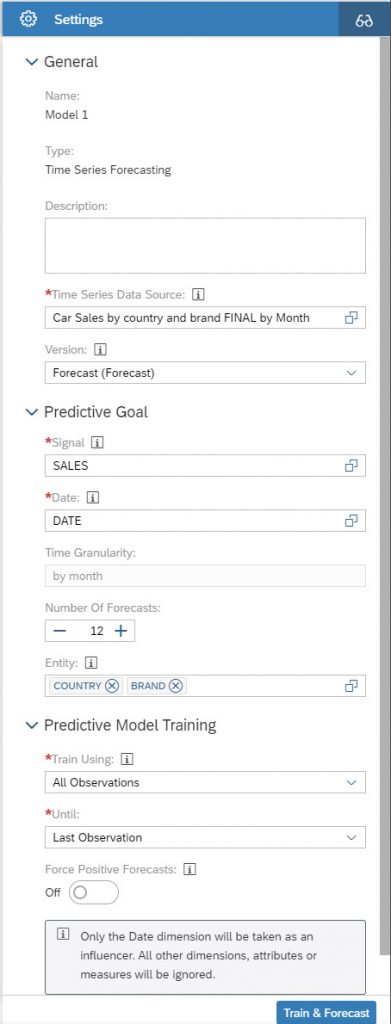
The planner selects the “Train & Forecast” button to build a predictive model. After a while, they can inspect the explanation pages for each country and brand, and get the sales forecasts for 2020.
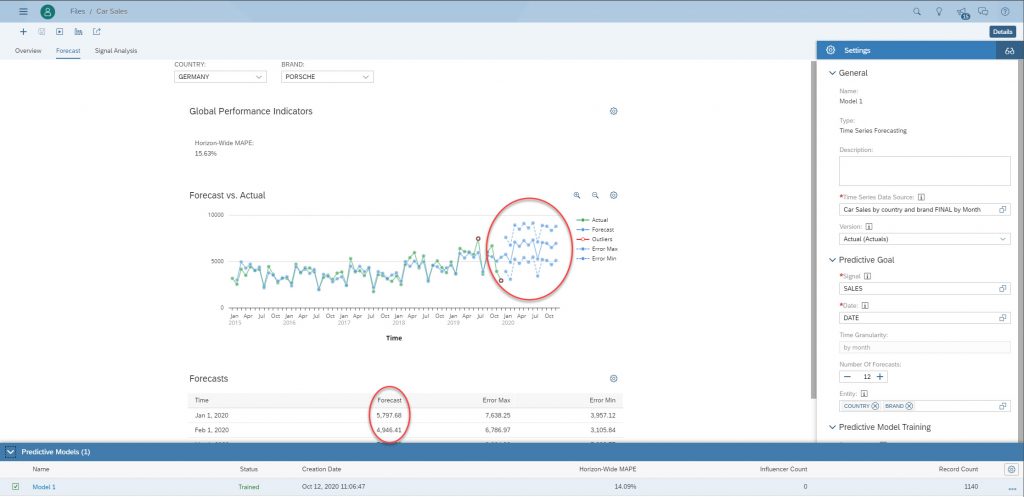
Assuming the planner is happy with these predictive forecasts, they want to report them into their working version of the planning model. To do that, they click on the “Apply” button, and they select the private version of the planning model.
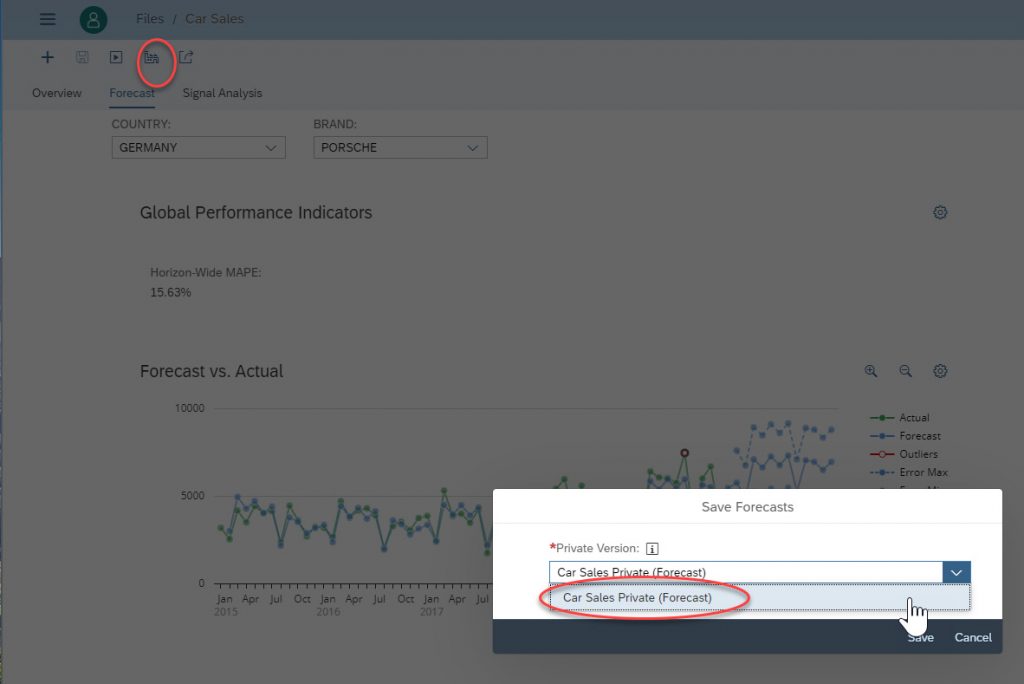
Once done, the planner goes back to the planning story to see the private version updated with the predictive forecasts.
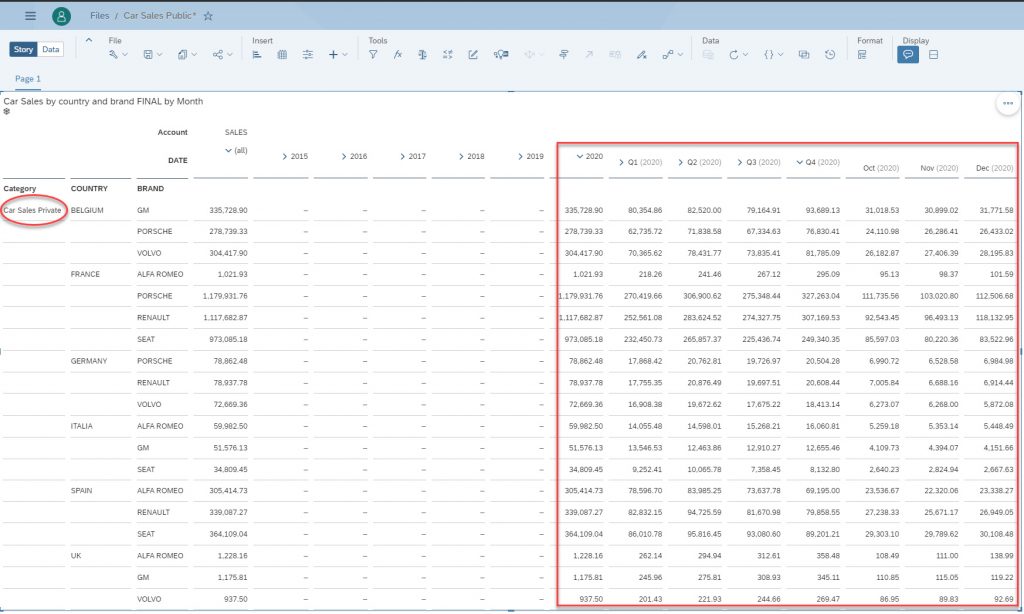
The planner can now use planning features like allocation process to adapt and refine the private version to meet their expectations and their objectives.
Once ready, if the planner publishes now, the publish mechanism updates the public version with the data of the private version, and will delete this private version. Note that there is also a “Publish as” that creates a new public version, but the private version is deleted in the end. If the planner wants to come back to the Predictive Scenario to refine it to get better predictive forecasts, they need to repeat the complete process. So, they have to recreate the private version, to share it with other planners, and to recreate the predictive scenario. This might be required, for example, every month when the planning is updated with actual values, and the planner wants to get new predictive forecasts. However, if they just want to adjust predictive settings, it’s a waste of time. To avoid this, the planner will first duplicate the private version as shown below.
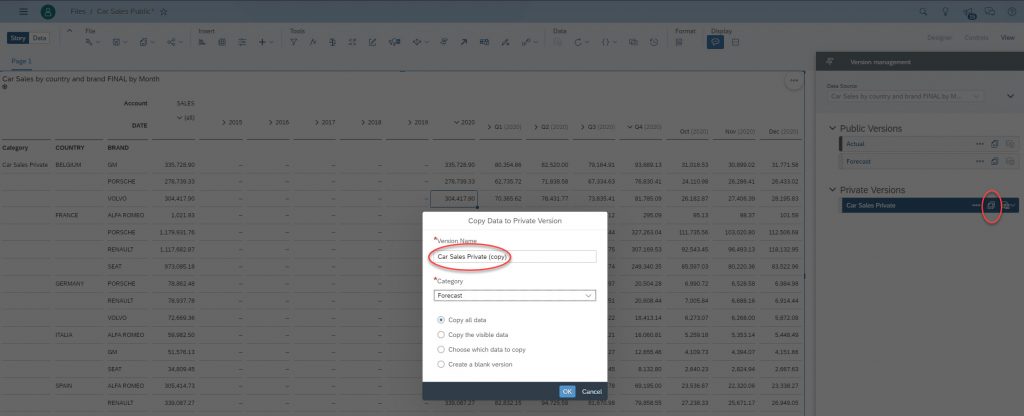
There are now two private versions:
- Car Sales Private which is linked to the Predictive Scenario
- Car Sales Private (copy) just created
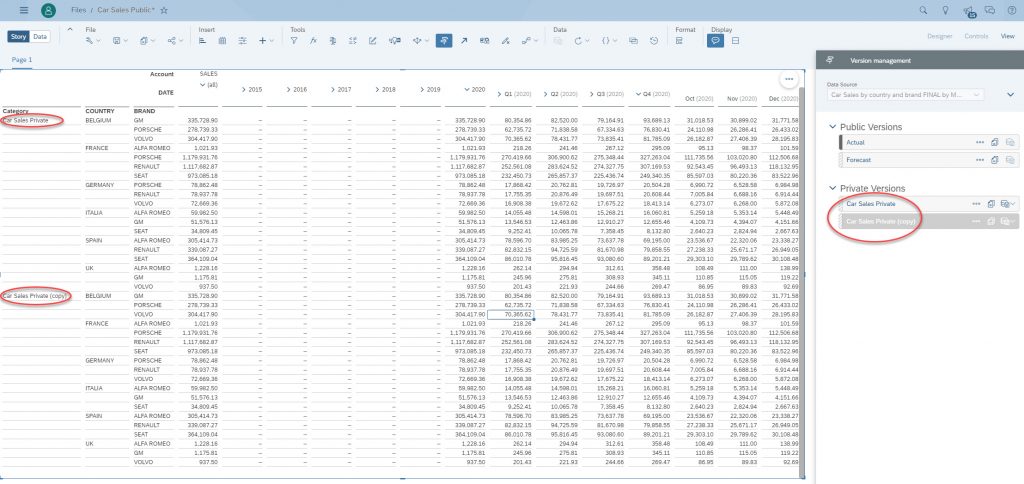
In the Version management panel, the planner selects the copy of the private version, and clicks on the “Publish” button.
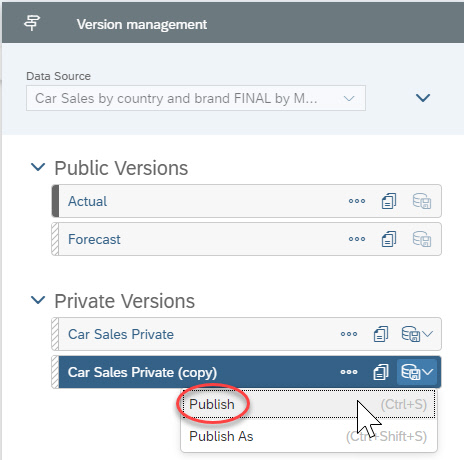
Then they choose the public version of the planning.
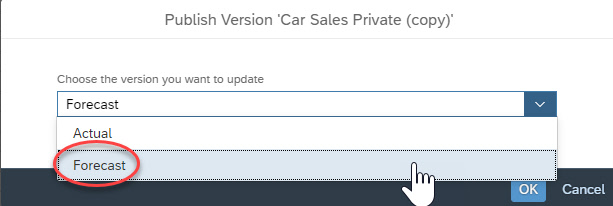
The content of the private version now appears as a public version, and the copy of the private version has been deleted.
